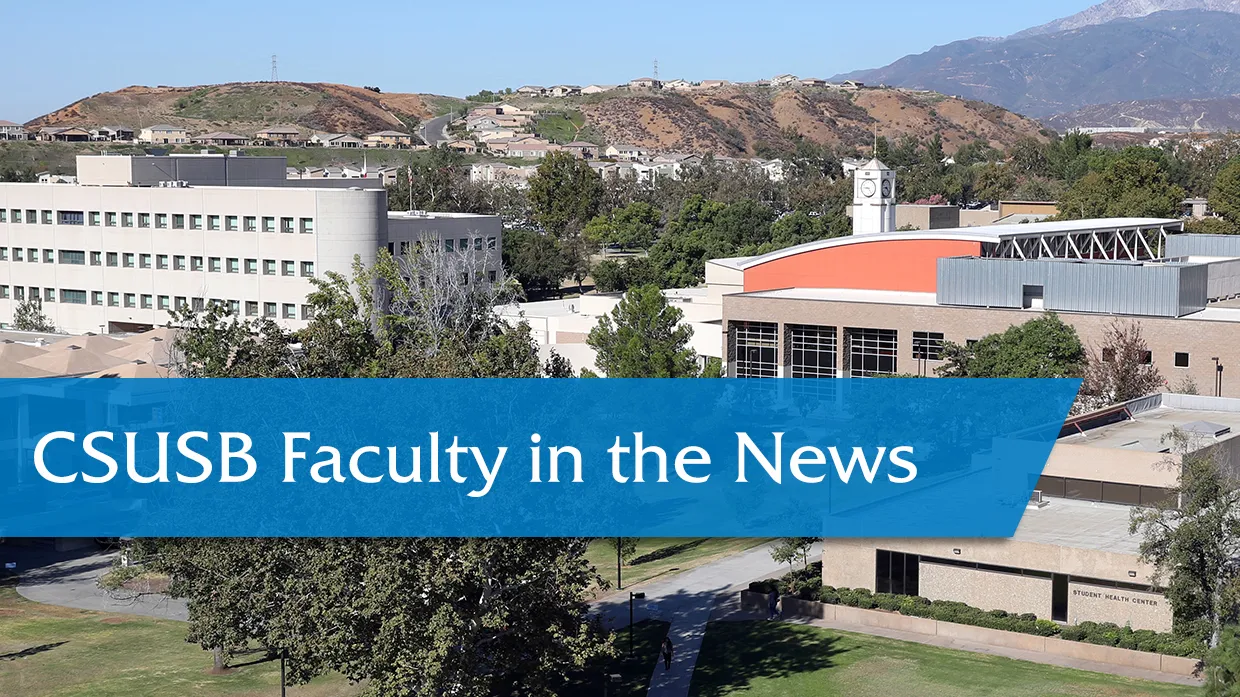
NOTE: Faculty, if you are interviewed and quoted by news media, or if your work has been cited, and you have an online link to the article or video, please let us know. Contact us at news@csusb.edu.
CSUSB professor Brian Levin comments on effect of 2016 presidential election one year laterThe New York TimesDec. 16, 2017
The newspaper took a look on hate-related incidents and sentiment one year after the 2016 presidential campaign and the election of Donald Trump.
Last year’s contentious presidential election gave oxygen to hate. An analysis of F.B.I. crime data by the Center for the Study of Hate and Extremism at California State University, San Bernardino, found a 26 percent increase in bias incidents in the last quarter of 2016 — the heart of the election season — compared with the same period the previous year. The trend has continued into 2017, with the latest partial data for the nation’s five most populous cities showing a 12 percent increase.
In addition, anti-Muslim episodes have nearly doubled since 2014, according to Brian Levin, the director of the center, which he said has also counted more “mega rallies” by white nationalists in the last two years than in the previous 20. “I haven’t seen anything like this during my three decades in the field,” he said.
Peppered among these incidents is a phenomenon distinct from the routine racism so familiar in this country: the provocative use of “Trump,” after the man whose comments about Mexicans, Muslims and undocumented immigrants — coupled with his muted responses to white nationalist activity — have proved so inflammatory. His words have also become an accelerant on the playing field of sports, in his public criticism of black athletes he deems to be unpatriotic or ungrateful.
Read the complete article at “‘Trump, Trump, Trump!’ How a president’s name became a racial jeer”
CSUSB professor comments on growth of white nationalismUSA TodayDec. 18, 2017
This summer’s seemingly overnight arrival of the self-described “alt-right” and white nationalist groups — marked most prominently by a deadly car attack at a “Unite the Right” rally in Charlottesville, Va., in August — drew worldwide headlines, but the movement simmered for decades before it burst into public view.
White nationalists have effectively used media coverage to spread their message, move into the mainstream and gain members.
Such rebranding of white nationalist ideas has allowed more Americans to feel comfortable publicly supporting at least some of the movement’s goals, experts say. After all, it’s hard to argue against personal liberty, freedom of speech and law and order.
“This is stuff that’s right out of the playbook of white nationalism from decades prior,” said Brian Levin of the Center for the Study of Hate and Extremism at California State University, San Bernardino. “It’s not just connected to race, but also morals and culture. Whenever we’re at an inflection point … when people feel change and fear, they are more likely to revert back to arguments that may be biased and comforting, as opposed to truthful. And I think what we’re seeing — people are amped up.”
Read the complete article at “Decades of pent-up anger feed white nationalist crusade.”
This news clip and others may be found at “In the Headlines” on the Inside CSUSB website.